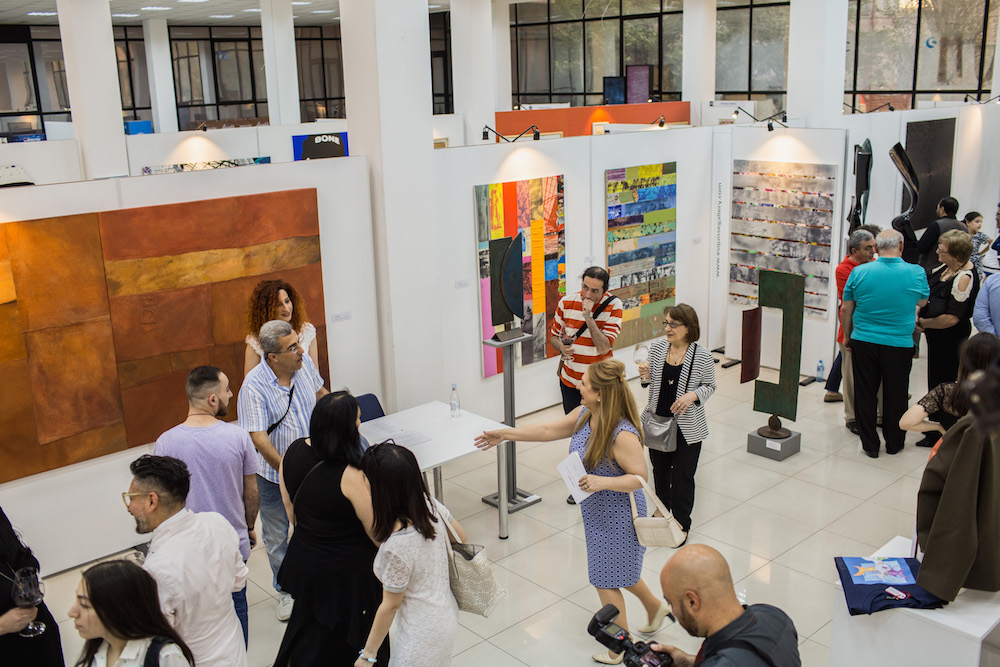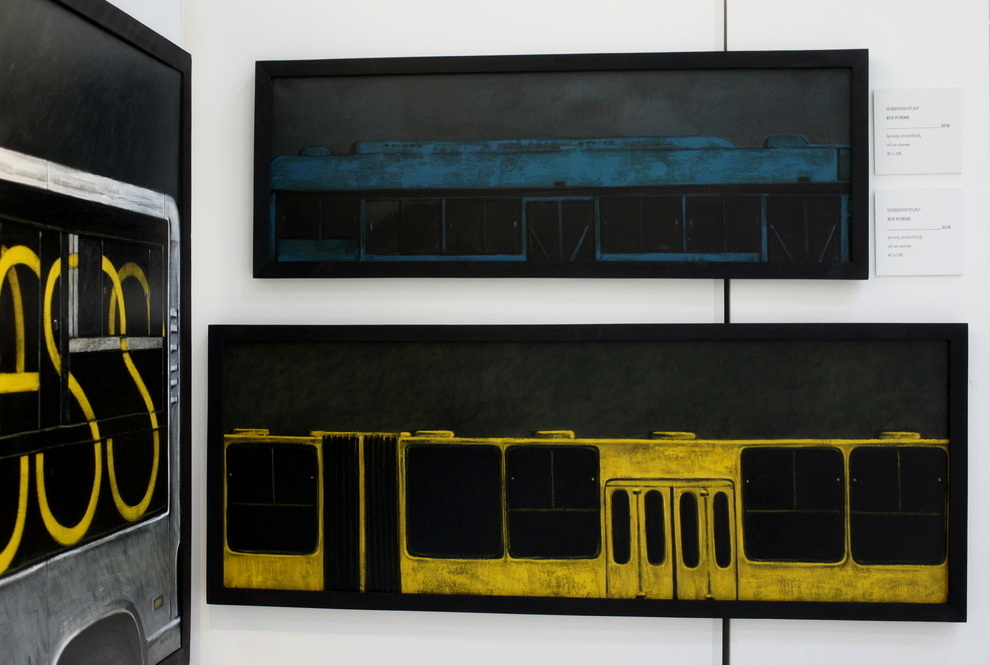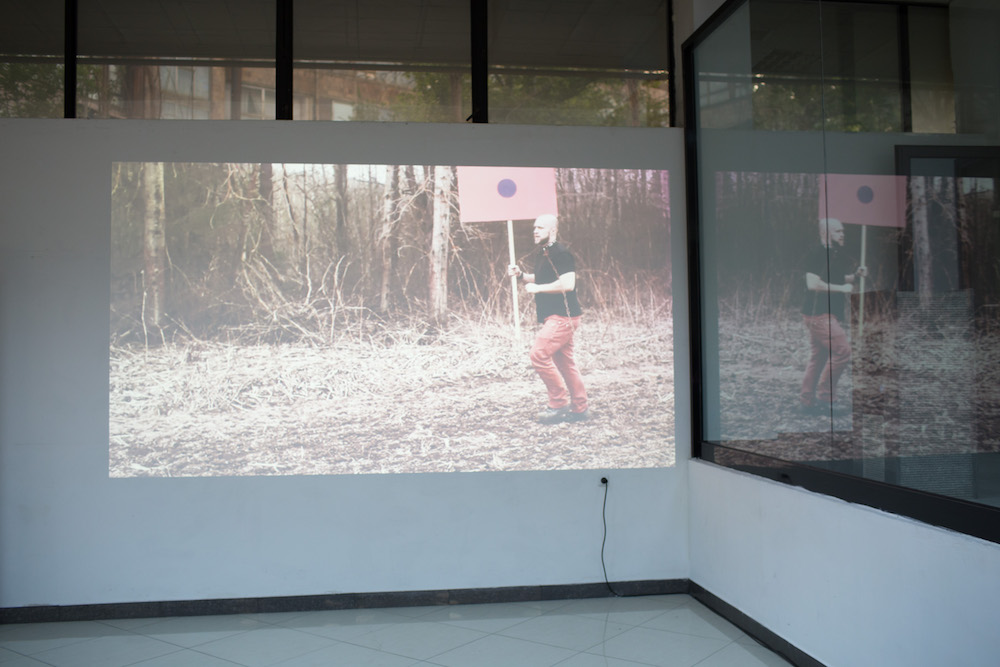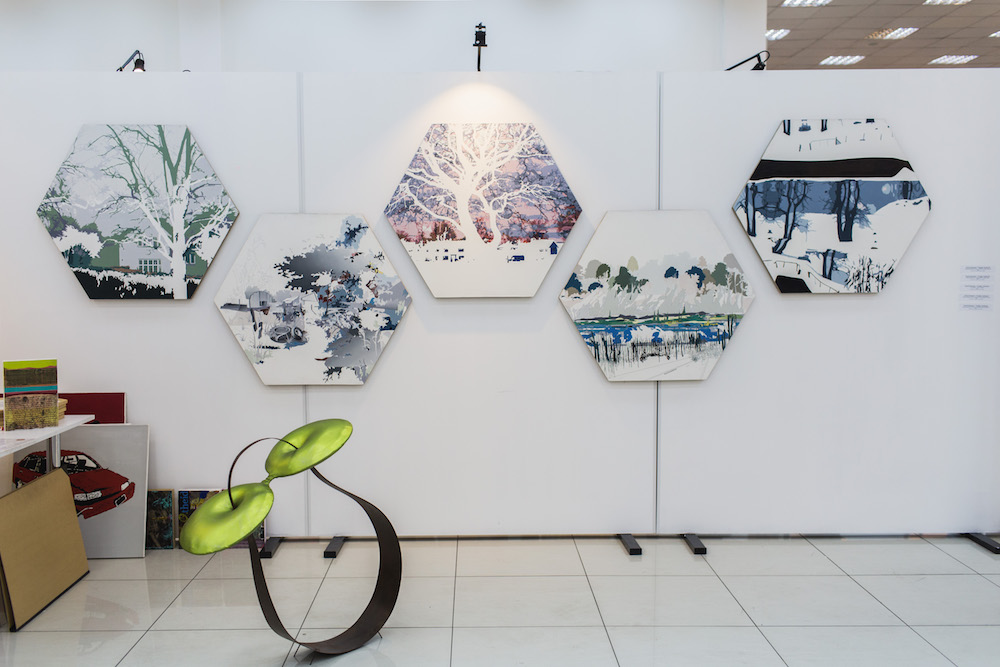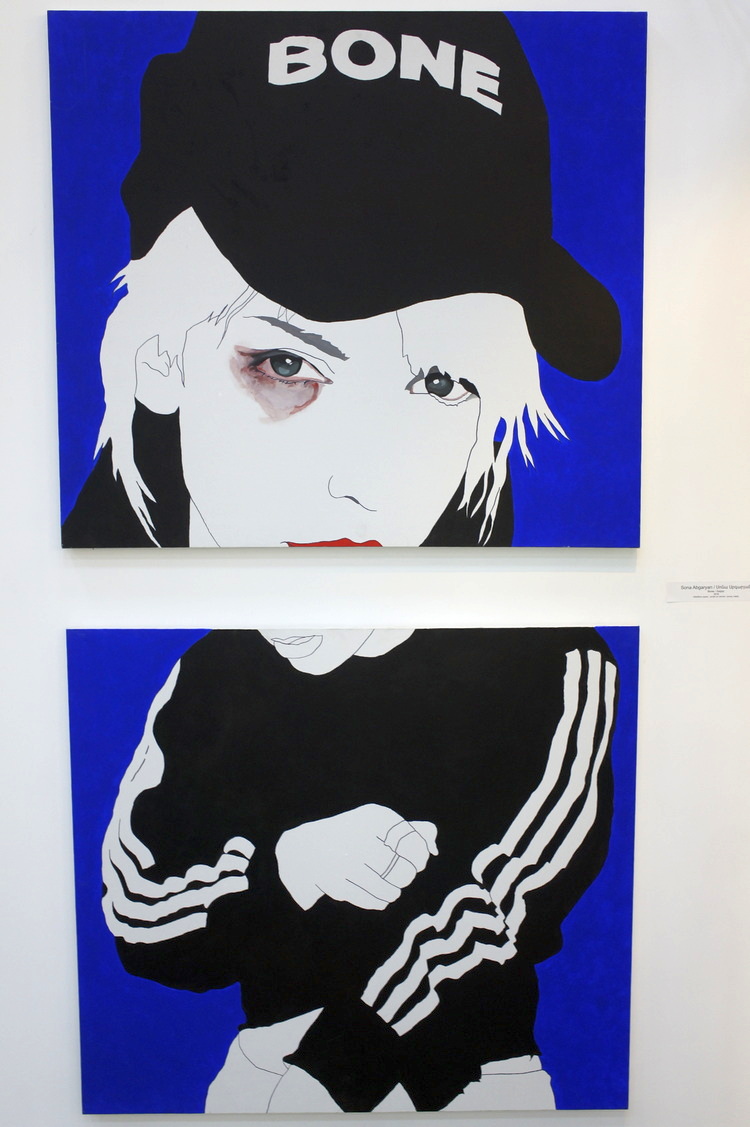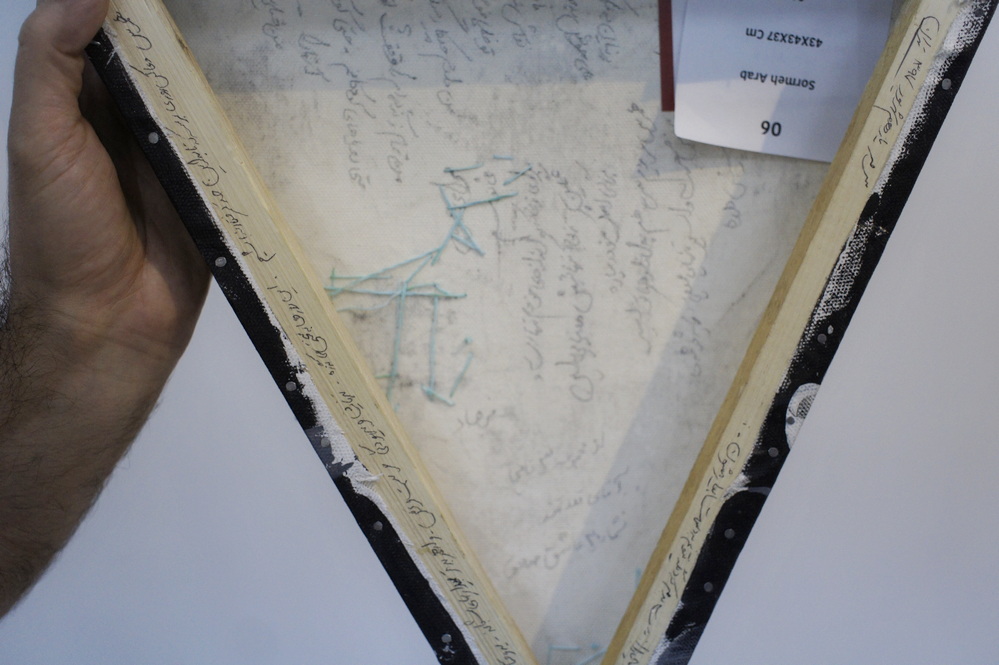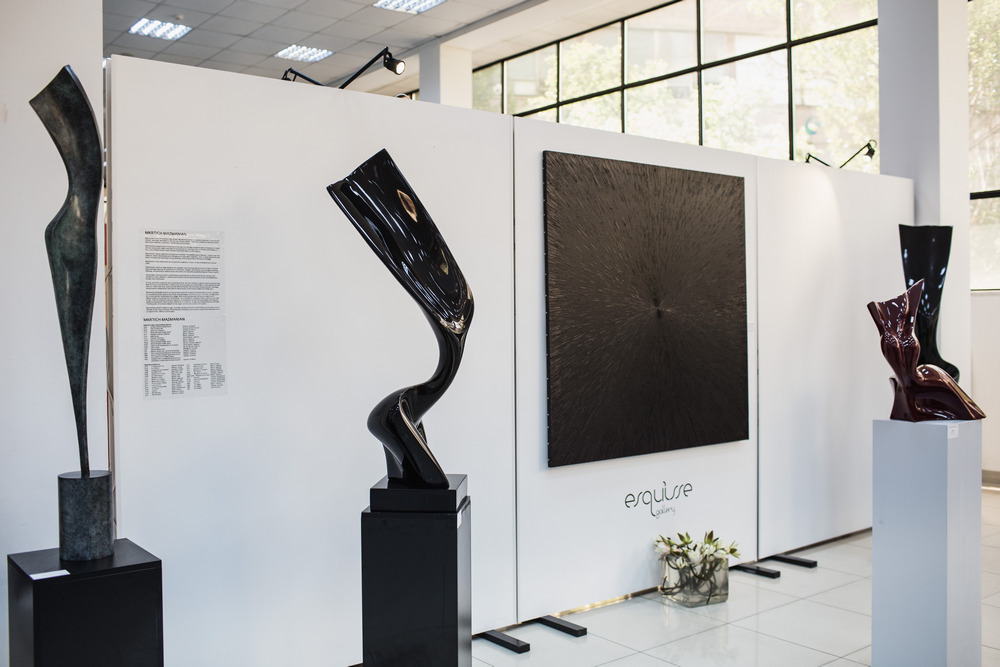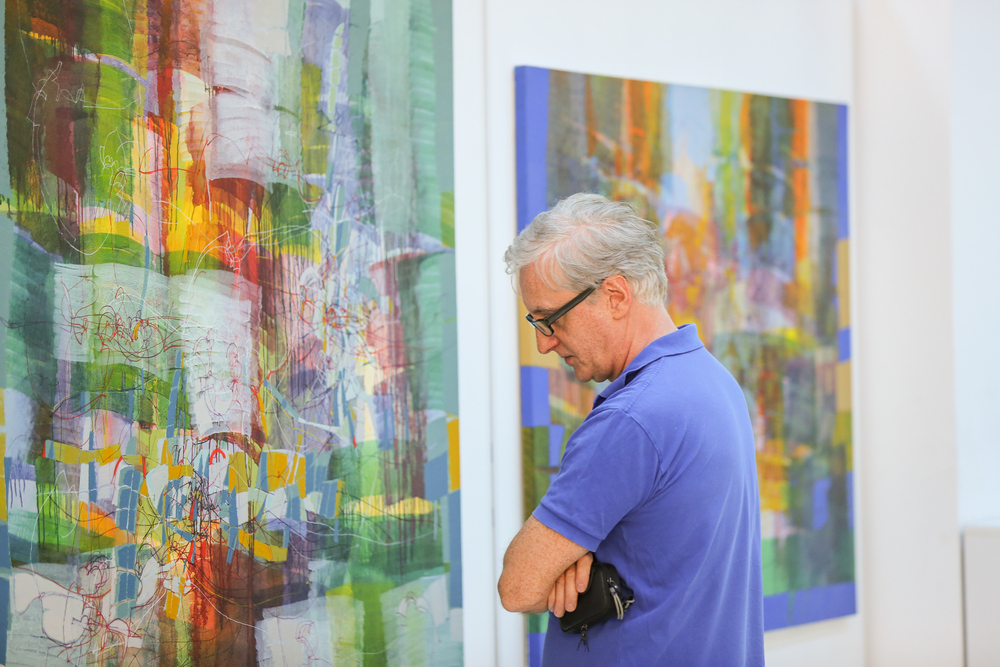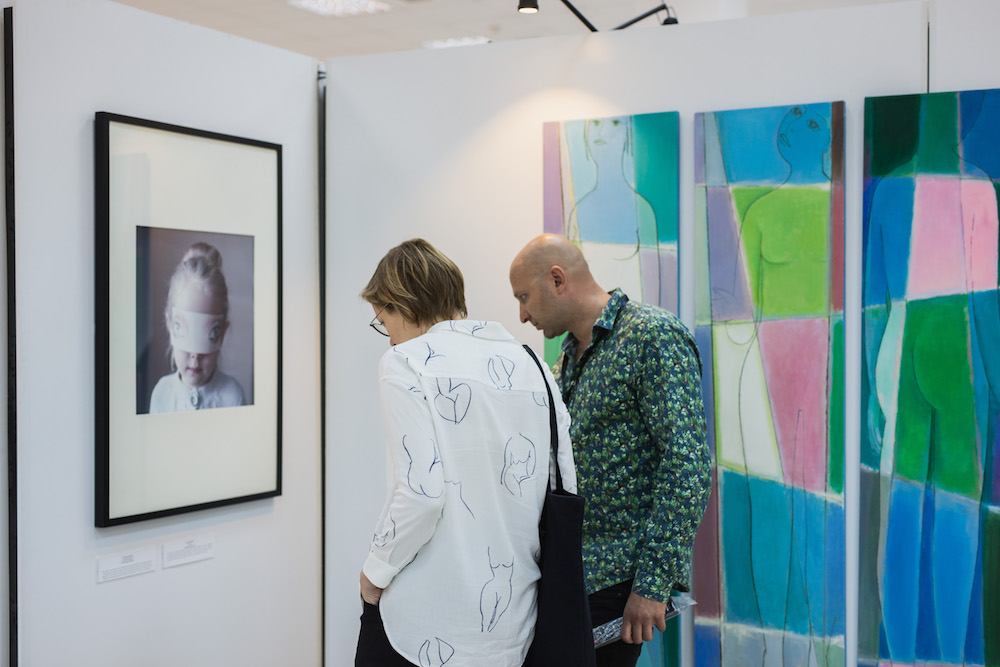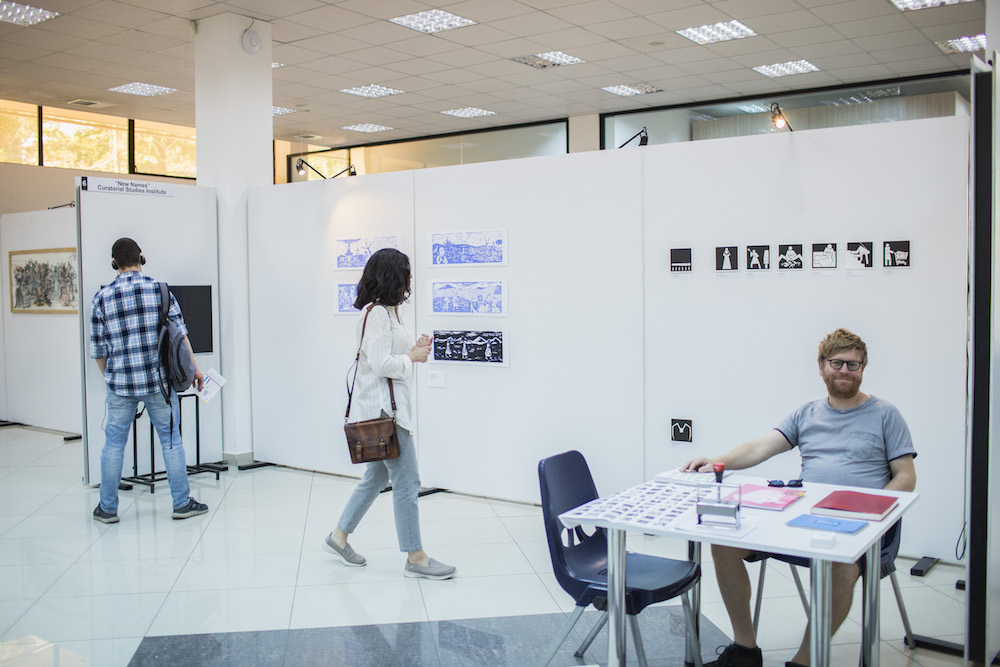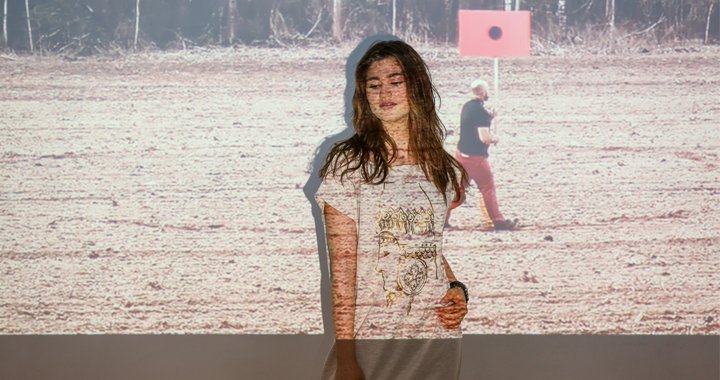
Armenia Art Fair is taking shape
Armenia Art Fair 2019
17/06/2019
This year saw the second edition of Armenia Art Fair take place in Yerevan, and the scope and ambitions of the event are definitely growing. Yerevan is a city of a million and a half in a country with a population of three million. At that, galleries offering collectors contemporary art can be counted on one hand. The situation, however, is somewhat balanced-out by a number of large non-commercial art institutions, including the local Centre for Contemporary Art. At the same time, there is a circle of active art collectors, and yet many of them live outside Armenia. Armine Antikyan, the owner of the Antikyan Gallery, told me that some, previously part of the political and financial elite, left the country after the recent revolution, while others have been living abroad practically since their childhood or were even born in distant countries to families of Armenian descent. The word ‘diaspora’ is not an empty sound here; you hear it constantly and in a great variety of contexts. However, foreign-based collectors from the diaspora frequently come to Armenia looking for artists defined by their interest in a strictly national style and subject matters, thus hindering the influence of global art trends. Two women, two like-minded art enthusiasts, Zara Ouzounian-Halpin and Nina Festekjian, have found themselves at the very junction of these local and global stories; they came up with the idea of Armenia Art Fair, which they first organised in 2018. To convince art galleries that participating would be worth their while, the first art fair invited them free of charge; with the second edition, which ran from 31 May through 3 June 2019, the more customary process of asking for a participation fee started.
The art fair is housed on the premises of the former Mergelyan Institute, originally built for the developers of the first Soviet computers and then reconstructed as the Yerevan EXPO. One of the most successful decisions made while mounting the fair was definitely inviting Eva Khachatrian, probably the most sought-after contemporary art curator in Armenia (she works with the local branch of the Goethe-Institut and Dalan, the most experimental small gallery located in the city centre of Yerevan) to join the project.
Galleries from the Caucasus, Europe, Middle East and the USA were represented at this year’s Armenia Art Fair. Because of the sadly still on-going hostility with Azerbaijan, there was no galleries from this country, but what really surprised was the absence of Georgian art galleries: they do, of course, have their own Tbilisi Art Fair over there, but it is still Armenia’s closest neighbour with its own well-established and strong art scene.
Fragment of display by Arthur Hovhannisyan presented by curator Marina Hakobyan.
The first thing I immediately noticed as I entered the second floor of Yerevan EXPO were the works by Arthur Hovhannisyan – a variety of painstakingly photorealistic depictions of buses, all of them, like some kind of memorials to themselves, with dark windows and completely deserted. ‘When you are looking at mundane things, you think of how they would look in a picture,’ Arthur told me. ‘Without any superfluous details, just the pure form. How do you transform things into art objects without losing our everyday link with these items? I am also interested in the reaction of people encountering images of mundane everyday life or objects that used to be part of it. Combining nostalgia and reality, that’s the multi-layered task we are dealing with here.’ An interesting presentation was put forward by the above-mentioned Antikyan Gallery: Marina Dilanyan’s Brush shown at their booth became for me a symbol for a whole string of works by other Armenian female artists representing something like a local version of ‘soft feminism’; meanwhile, the Lenduta installation by Ararat Sarkissian involved a video mounted right inside one of a whole scattering of small landscapes. Although video works were featured at the art fair ‒ at the display of post-Soviet art put together by the Belorusian artist Oleg Kostyuchenko (for instance, the protagonist of the Territory Protest video by Mikhail Gulin, circling on one spot with some kind of abstract flag in his hands), as well as the curatorial presentation by Juraj Carny from the Slovakian Curatorial Studies Institute (the key piece of which was the extremely convincing documentary video by Tomáš Rafa about the rise of neo-Nazi movements in Eastern Europe), Sarkissian’s work was the only case of a video shown in the booth of a commercial gallery, albeit with a painting serving as a frame.
Artur Sarkissian, "Lenduta" installation.
Video work Territory Protest by Mikhail Gulin from curator Oleg Kostyuchenko’s project Talent for Export.
‘Soft’, contemplative feminism emanated from the works of female artists represented at the Gallery Girl platform and selected by its organiser, the London-based Lizzy Vartanian, who put it excellently when defining her criteria: ‘I love working with people who are like me, and it just so happens that I am a woman (laughs)... I think that in the current art world this is an excellent time for being a woman and being a female artist.’ Some of the works on view in the Gallery Girl booth were by a young Armenian woman who also lives in London; her name is Luska, and, alongside showing at the fair, she also appeared at the Club Night performative programme with the young and extremely interesting musician Hayk Karoyi Karapetyan. At the small Second Floor club in the city centre of Yerevan, Luska ‘recited’ rap in Armenian interspersed with English phrases, and her main message dealt with the experience of crossing borders and overcoming the fear of being a stranger and being different. Hayk Karoyi Karapetyan played his hypnotic rhythms, sometimes with impressive folkloristic insertions. At another event that was part of the art fair programme, a joint performance with the German sound artist Olaf Nicolai, he played the Armenian traditional musical instrument duduk while Olaf presented his politically-tinted disquieting sound collages from the In the Woods There is a Bird project, created as a tribute to documenta 14 (while his appearance in Yerevan was organised with the support of Goethe-Zentrum Eriwan).
Fragment of Luska performance
Of the Armenian galleries housed on the second floor, the one deserving a special mention is the newbie Neolocal Gallery, presenting hexagonal canvases by David Kareyan, sculptural objects by Manan Torosyan, as well as urbanist paintings by Diana Hakobyan and expressive vibrant works by Sona Abgaryan. A well-rounded and consistent selection of art featuring global trends with a local touch. It was nice to hear that the gallery did not remain unnoticed by collectors and managed to sell several pieces by Diana and Sona. On the whole, the price range for the works presented at the fair was quite democratic, from EUR 500 to a couple of tens of thousands. Among the most expensive were the works of the late painter Felix Yeghiazarian, who passed away a couple of years ago; they were on view in the booth of Bravado Fine Arts, an American gallery presenting Turkish and Armenian art. At the same time, for a price under EUR 1000 you could purchase, for example, an impressive painting by Armen Gevorgian (1958) in the booth of the Aramé Art Gallery; a canvas by the artist is also part of the permanent exhibition of the Yerevan Museum of Modern Art.
In the Neolocal Gallery booth.
Work by Sona Abgaryan in the Neolocal Gallery booth.
Alongside local artists, Armenian galleries also presented art hailing from other countries. Thus, the Karoyan Gallery showed two Israeli artists, Nechama Levendel and Avraham Eilat, doing some interesting things on cardboard and with cardboard. Several galleries had come to Yerevan from Spain, including the Seville Galería Weber-Lutgen that brought to the fair a selection of authors and works reconsidering the format of painting and its boundaries.
Work by José María Larrondo in the booth of Galería Weber-Lutgen from Seville.
Another country well represented at the fair was Iran. A small representative selection of young artists from Iran was aptly entitled Iranian Emerging Artists; these were predominantly ‘angry young men’ exploring the subjects of censorship and prohibitions; meanwhile, the booth of the Tehran Vista Gallery featured a local variation of ‘feminine feminism’, showing works by Gandom Amiri and Setareh Hosseini. Another female artist represented by the gallery, Sormeh Arab, even keeps a personal journal on the reverse side of her triangular and distinctly gentle works combining painting and knitting, describing her family relationships, dreams and dramas. We spoke with Hamidreza Karami, a representative of the Vista Gallery, who said all the countries of the region basically share a certain general artistic taste. ‘It is a taste more modernist than contemporary, with works more likely to be figurative, light-filled, vibrantly coloured as opposed to the ‘cold’ and detached European artists or their sometimes ‘ugly’ sculptures or their demonstrative conceptualism.’
Hamidreza Karami shows the visual diary of the Iranian artist Sormeh Arab.
To an extent, this statement resonated with the talk held by Iain Robertson, Head of Art Business Studies at Sotheby’s Institute of Art, as part of the Night Owl public programme of the art fair, where he spoke about the increasing influence on the contemporary global art fair by collectors from China and other Asian countries, who prefer manifestations of art as a craft, not as a pure play of ideas or a factual recording of reality. Future will show if he is right.

Iain Robertson at his talk at the National Gallery.
Meanwhile, we would like to wish Armenia Art Fair prosperity and long life, at least as long as the one enjoyed by one of the participating galleries ‒ the Armenia- and France-based Arakyan Gallery, presenting abstract artists for 28 years and counting. The fair does suffer from certain growing pains; nevertheless, the actual focus on not just commercial but also educational and representative aspects of the art world (of the 37 participants presenting their displays, only 20 were commercial galleries) seems very right. Yes, it was mostly painting with fragmentary pockets of sculpture and photography, and yet it is the formal range for many art fairs based in regions where all the conceivable diversity of contemporary art and its formats are currently still more of an experiment than a serious subject of interest for collectors.
Armenia Art Fair is an important platform for contacts between artists, gallerists. collectors and art-loving public. It is also a space for introducing into the public consciousness the female artistic optics in all its diversity, ranging from Luska’s works, rooted in street art, to documentary photography that does not shy away from underlining socially relevant and controversially perceived subjects like the ones highlighted in the projects by the four female photographers from the 4 Plus group.
Armenia Art Fair definitely makes sense. And it deserves attention not just from collectors with Armenian background but also the cosmopolitan art public capable of deriving satisfaction from Yerevan with its welcoming and open ambience and the art fair offering quality art at reasonable prices.
Works by Armen Gevorgian and Ruben Grigorian in the Aramé Art Gallery booth.
In the booth of Crisolart Galleries (Barcelona/New York)
Touch by Amin Moazzami from the Iranian Emerging Artists booth.
Amina Moazami "Touch". From the Iranian Emerging Artists booth.
Sculptural piece by Garen Bedrossian at the Antikyan Gallery booth.

Gandom Amiri artwork at the Vista Art Gallery booth.

At the Yerevan gallery Dalan booth (background artwork by Mushegh Mkhitaryan).
Ian Robertson at the Czech Varbo Art gallery booth. Painting by Albert Hakobyan.
Hayk Karoyi Karapetyan during a joint performance with Olaf Nicolai.
Commissioner of the Ural Industrial Biennial Alisa Prudnikova with the Belarusian artist and curator Oleg Kostyuchenko looking at Alien by Julia Nazarova.
Slovakian curator Juraj Carny representing Curatorial Studies Institute.
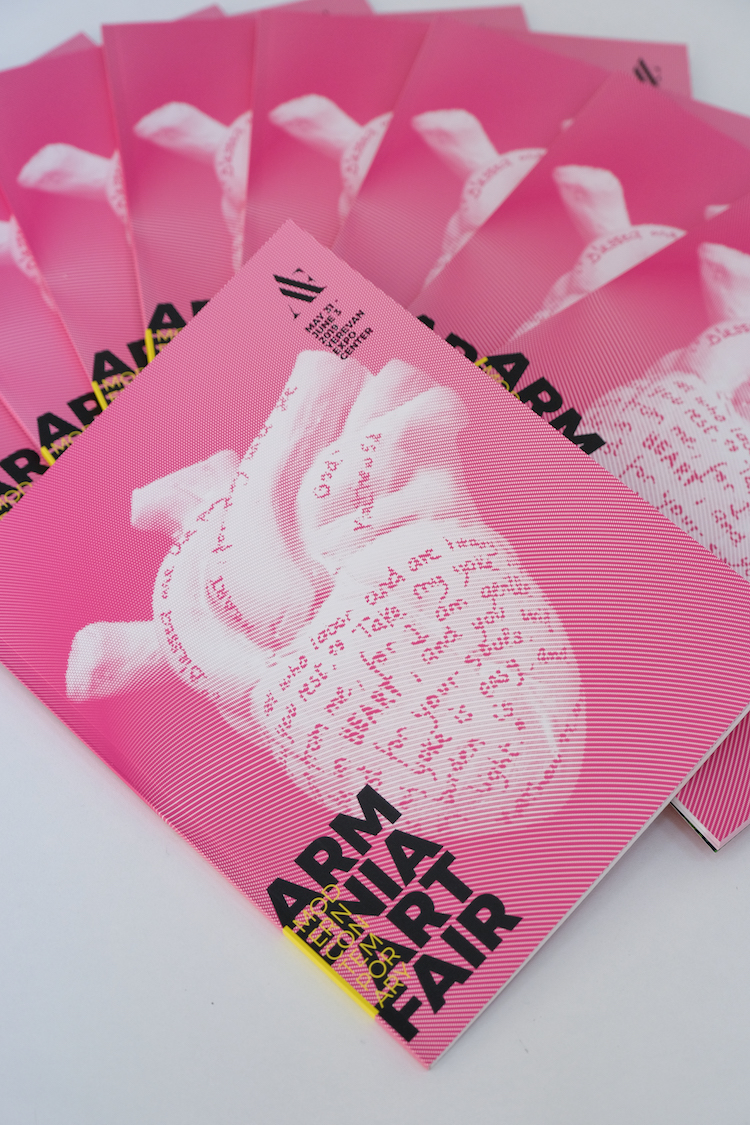
Art Fair catalogue.
